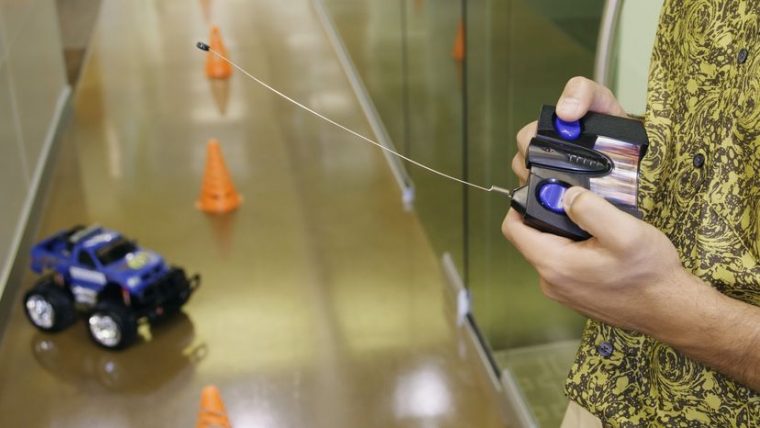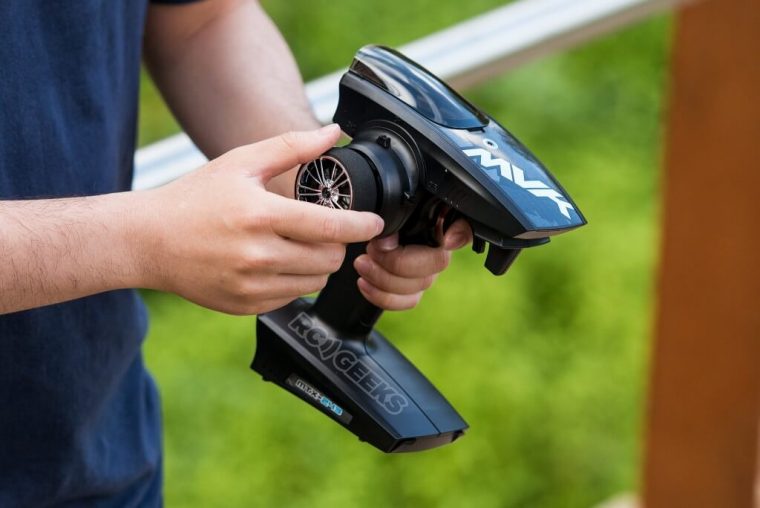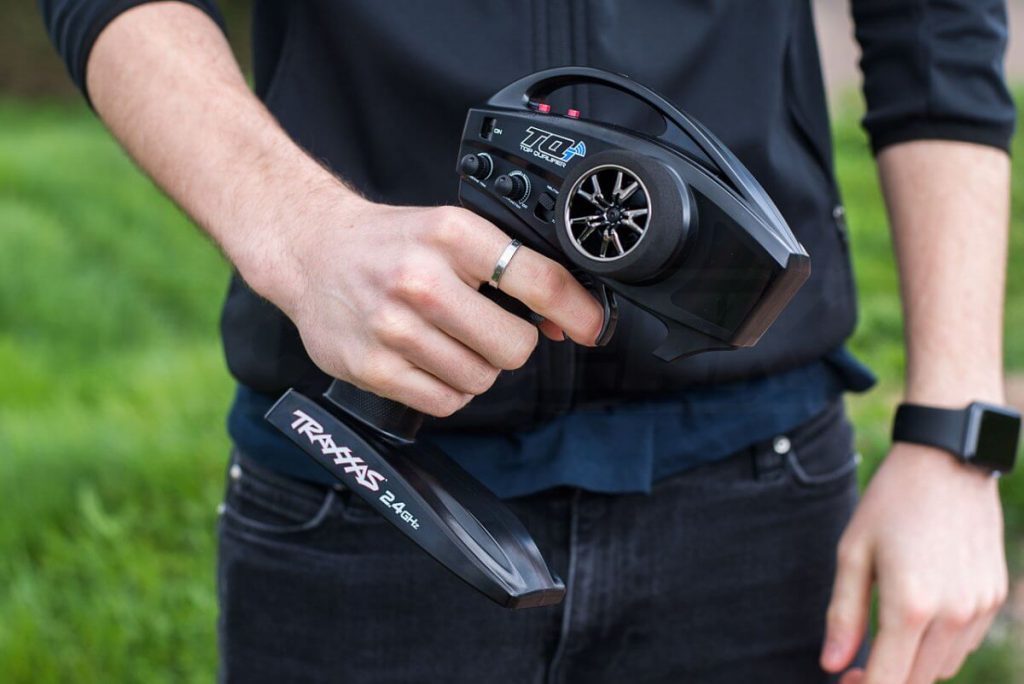Toys have been a part of everyone’s childhood, but since the mid-60s the types of toys kids play with started to change. Nowadays, RC toys are everywhere. You can find them as cars, planes, and even boats. Although some would say that these types of toys aren’t as good for kids as more conventional ones, there are some benefits that you just can’t ignore. RC toys are able to get your kid to play outside, learn about different types of vehicles, and even learn some basic engineering.

You can have fun with your kids with the help of RC toys, and they can also improve your child’s creativity and imagination. With RC toys, your kid will develop better hand-eye coordination, as well as fine motor skills, all while having fun. The big dilemma you’ll have is whether you should choose buggies or RC trucks, as well as the type of controller that will work best for your type of RC vehicle.
Which RC Transmitter Is Best?
Transmitter Adjustments

Since an RC radio control set works by sending signals, a quality RC radio transmitter comes with transmitter adjustments. These adjustments allow the user to alter the signals the transmitter is sending. These refinements found on quality RC radio sets will allow you to alter properties such as steering dead points, as well as throttle and steering sensitivity. This makes it easy to drive your RC vehicle in different terrains, even ones that it isn’t made for.
Trim Adjustment
Trim adjustment is a feature that lets you fine-tune the inputs coming from the transmitter. Trim adjustments are usually made through a dial, and they’re made when your RC vehicle isn’t tracking in a straight line. By adjusting the trim to neutral you ensure that your RC vehicle doesn’t reverse or accelerate by itself.
Dual Rate Adjustment

A dual-rate adjustment feature allows you to have control over what is known as the “throw” of the input. This means that the entire travel of the throttle and/or steering inputs are both in use but scaled down. When driving your RC car at higher speeds, dual-rate adjustment can help you keep control when steering into sharp turns. A dual-rate adjustment can also be used to limit power, especially when driving on loose or slippery surfaces. This is ideal when a beginner is driving a powerful car.
Reverse Switches
The reverse switches are pretty simple and self-explanatory, as they reverse the input given by the transmitter. For example, if your RC car is turning left when you clearly turn the dial to the right, just reverse the channel that controls that input and you have your issue fixed.
Exponential Adjustment

While this type of adjustment is typically found in high-end RC radio sets, more and more budget transmitters are being made with it. Exponential adjustment allows you to modify the behaviour of the transmitter inputs. A great example here is the ability to soften the initial steering input and not sacrifice your RCs full steering lock.
Multi-Model Support
If you plan on getting multiple types of RC vehicles, then you are better off getting a transmitter that is able to work with multiple models. These types of transmitters are able to memorise multiple profiles which can be turned on when connected to a certain model.
These profiles have a custom setup that is best for the vehicle you’re using it with. There are even small refinements that are made once you set the profile for the corresponding RC model. This means the transmitter is ready to be used with the RC vehicle without you having to spend time doing the refinements yourself.
Simulator Support

If you want to master driving your RC model without the risk of damaging it, then you should get a transmitter with simulator support. These higher-end RC transmitters can be connected to a computer via a USB cable and be used as a PC controller to drive your RC model in a virtual simulator. You’re basically playing a game.
End-Point Adjustment
Endpoints are used to adjust the turning of your RC vehicle. If your model doesn’t turn as much as you want it to, you can adjust the end-point of the throttle. This way you can set how much acceleration you’ll be able to get when turning. More advanced transmitters have a programming mode on them that allow you to adjust the endpoints which you would otherwise need to do manually.
Channels

The number of channels on your radio control set is a good indicator of how much control you’ll have over your RC model. If the transmitter has one channel, then only one function can be controlled by it, such as a movement or turning the model on and off. Usually, 4 channel transmitters are the standard as they allow you to control the four basic movements forward, backwards, left and right.

















